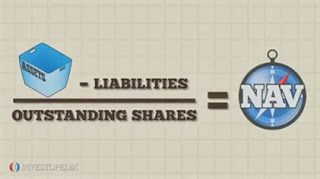Friday, 27 December 2013
Understanding the NAV basics before investing in Mutual Funds
It might be possible that by now, more
than a few people might have spoken to you about the importance of investing
money. With the cost of basic necessities rising on a daily basis, it has
become all the more essential to plan for the future. In such situations saving
is not enough. It demands us to take necessary steps.
So once you have taken the decision of
investing in any of the avenues out there, you will find that there are many to
choose from. As you would be putting your hard earned money on the line, it
becomes essential to understand all the details of a scheme before you start
with your journey.
In order to truly understand the market,
it is crucial that you educate yourself regarding some of the basic terms that
might be relevant with your investments. When it comes to mutual funds, this is
when the funds of an investor are grouped together and invested into products
like stocks that might not be affordable on an individual level.
 |
| Net Asset Value is the total remaining asset after calculating your liabilities and outstanding shares. |
One of the most important terms you
should get familiar with is the NAV
(Net Asset Value) of a mutual fund. It determines the actual price of a unit of
the fund. It is based on this value that you make an investment decision. When
a fund first enters the market, it has an NFO (New Fund Offer). Later according
to the investments and the fluctuation of the market, the value of a fund rises
or falls based on different factors.
The Net Asset Value in India becomes a
useful piece of information for you because it qualifies as the actual value of
a fund by subtracting the liabilities divided by the number of outstanding
shares. This in turn comes with an actual value per one share the fund. Here,
the liabilities are defined by the amount of debt that has been agreed to be
settled at a certain period of time.
This was one of the few terms you should be familiar with while investing in mutual funds. Once you are clear about it, you can do a little bit of research around the market and browse through the options and make the right choice for a fund.
Discussions and Tweets on NAV :
4 hours ago - Via TweetDeck - Reply - Retweet - Favorite - View |
14 hours ago - Via HootSuite - Reply - Retweet - Favorite - View |
17 hours ago - Via HootSuite - Reply - Retweet - Favorite - View |
17 hours ago - Via Facebook - Reply - Retweet - Favorite - View |









0 comments:
Post a Comment